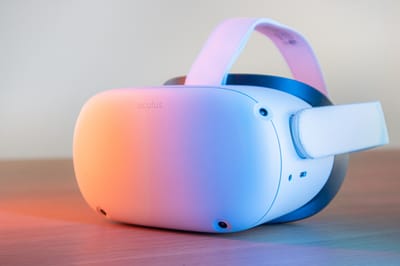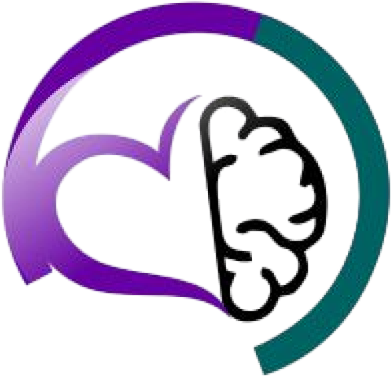Carol Ann Brayley, MSW, RSW, SEP
www.NeuroHelp.ca
About Me

I am trained in a very long list of cutting edge approaches that are based upon the latest research on the brain and the nervous system, including Brainspotting (Phase 1, 2, 3, 4, Addictions, "Hero's Journey", "Brainspotting & Parts Therapy", and "From Freeze to Thaw"), Eye Movement Desensitization & Reprocessing (EMDR), Internal Family Systems Therapy, Integral Somatic Psychology, a long list of Energy Psychology approaches, Energy Medicine, and more.
Some high tech tools that I have available for use at home, are the Koji's Quest VR program for neurological rehabilitation, NeurOptimal Neurofeedback, the Safe & Sound Protocol (SSP) by Stephen Porges, as well as the Focus System by Unyte-iLs.
Each of these systems, in different ways, help to promote optimal functioning of the brain, nervous system, and associated bodily systems. Improvements are often noted with concerns such as tinnitus, brain injuries, chronic pain, fibromyalgia, misophonia, chemo brain, learning disabilities, migraines, alzheimers, dementia, sports performance, academic performance, autism spectrum disorders, and more - depending upon the system.
In recent months I have shifted my practice towards offering consultations to SSP providers and creating trainings for them, as well as offering group for neurodivergent women, as well as Somatic Experiencing skills groups.
Group Programs
Neurofeedback

NeurOptimal is easy to use, safe and gentle. It does not require first having any kind of assessment, or complicated and expensive brain mapping as, with NeurOptimal, the brain is in charge.
NeurOptimal is designed to be completely safe. Unlike some forms of neurofeedback that require extensive training and run the risk of user error, with NeurOptimal no frequencies are sent to the brain. The system is on a tablet, and five sensors are attached to the scalp and ears.
The sensors monitor brain functioning. During sessions, music - or children's TV shows or movies, if desired - are playing through the tablet. When the sensors detect that the brain is about to shift from one state to another, there will be a little crackle or gap in the audio - kind of like a record "skip".
Because this pattern keeps happening over and over again, the brain begins to recognize it is being given feedback about itself.
It's kind of like if we had been doing yoga our whole life but we had never had a mirror in front us. Then one day a mirror appears and all at once we can see that our downward dog has been a bit "off".
By increasing the brain's awareness of what it has been doing, it gives the brain a chance to course correct. The brain itself decides what it does with that information and how it wants to proceed.
Because the brain is in charge with this system, there does not tend to be any risk of side effects as the brain does not tend to push itself faster than it is ready to go.
Neurofeedback is not considered either a treatment or a therapy but rather a form of brain training - basically it is like "going to the gym" for the brain. However, when we optimize brain functioning an extremely wide range of areas have the potential for improvement as the brain helps to mediate every other system of the body. Areas such as mood, sleep, nervous system, memory, cognition, immune system, energy levels, digestion, allergies, focus, emotional regulation, headaches including migraines, and more are all areas where improvements may occur.
During sessions, you can simply relax. Taking naps, reading, answering emails, playing games on a phone or tablet are all completely fine during NeurOptimal sessions. This system has been used on patients in comas with positive results. Sometimes parents of small children on the spectrum may run sessions on their children during sleep. Kids who struggle with homework, often find their homework much easier when they do it while having a NeurOptimal session.
NEUROPTIMAL PRICING
Those accessing NeurOptimal with me who are based in Ontario and have extended health plans that cover social workers may be reimbursed for their sessions, within the limits of their plan.
In Person Sessions
Sessions done in person are $120 each.
I am currently at capacity for in person NeurOptimal sessions, but do have rental systems available for home use.
NeurOptimal Rental System Packages
Discounts and free delivery available, please enquire for details.
Up to 20 sessions, over 4 weeks......$800 ($40 per session)
Up to 50 sessions, over 4 weeks......$1000 ($250 per week)
Unlimited sessions, over 4 weeks.....$1200 ($300 per week)
Feel free to share your sessions with friends and family. If a child is doing brain training it is ideal if at least one parent is also having sessions.
When people do brain training together they tend to "synch up" better and feel more connected. As we begin to improve we are able to support the improvements of others. Family life often becomes more harmonious, even when someone in the home has previously been difficult.
Neurofeedback units are also available for purchase. Should you choose to purchase your own unit after having rented one from me, I will rebate up to $150 of your rental fee. Please enquire for details prior to purchasing.
Koji's Quest VR
Koji's Quest (VR) Program is a fun and engaging gamified approach to neurological and cognitive rehabilitation. When approaches are fun they are easier to stick with! Great for kids and adults alike. So far I am seeing wonderful improvements with my own executive functioning and noticeable improvement with post concussion syndrome.

Claiming neurplasticity - permanent change - with neurological rehabilitation requires repetition. Although many approaches to neurological transformation are not necessarily difficult, they are frequently not terribly engaging.
The Netherlands based Neuro-Reality company has gamified cognitive rehabilitation with their VR game Koji's Quest.
Click here to explore the different Koji's Quest worlds
Koji's Quest Pricing:
Please note: Koji's Quest requires a Meta Quest headset. I have limited ones available for an additional rental fee for those local to me, if you do not wish to purchase your own. Please enquire for details.
Monthly fee (pay as you go): $160 CDN (approx $120 US)
3 Month access: $400 CDN (approx $295 US)
6 Month access: $720 CDN (approx $530 US)
Family Discounts:
Additional family members accessing Koji's Quest in the same time period are 50% off.
Koji's Quest Worlds
Safe & Sound Protocol (SSP)
I am an internationally recognized expert on providing a safe and gentle experience of SSP to even the most complex people. I have used SSP with hundreds of people all over the world, ages 2-78 years old, since May 2019.

The Safe & Sound Protocol is a 5 hour auditory intervention, created by Stephen Porges, the founder of polyvagal theory.
SSP music has been specially filtered in a way that causes the vagus nerve to become stimulated during listening. SSP music is basically delivering "cues of safety" to the nervous system.
As long as this listening occurs in the context of someone feeling safe and supported, this introduces a calmer, parasympathetic state, and allows someone whose brain may have been constantly scanning for danger to no longer enhance and hyper focus upon lower frequency sounds - the sounds of danger - but instead to shift focus to higher frequency sounds - the sounds of human speech.
SSP listening also helps to improve the functioning of the middle ear muscles which ideally then become better able to filter out background noise to hear the sound of speech, and others sounds of safety.
This changes all come together for example to allow someone to be able to more easily - and often effortlessly, without "trying" or even being aware that they are doing so - to filter out sounds that they previously would have been distressed by.
Areas of Improvement Potentially Arising 2-7 weeks after completion of SSP Core
Reduced anxiety, especially social anxiety
Improved assertiveness and self protectiveness
Increased displays of affection-seeking affection-expressive contact
Increased facial flexibility and expressiveness
Increased body flexibility
Reduced chronic pain
Change in throat tension/sound of voice
Improved eye contact
Reduced repetitive motions and restlessness
Increased feelings of calmness
Hearing changes/reductions in sensory hypersensitivities
Finding transitions much easier
Speech and language improvements
Reduced sensitivity to food tastes and textures/less "picky eating"
Improved reciprocal communication
Thoughts and behavior have more purposeful flow
Improved comprehension
Easier to follow directions
Improved processing speed
Improved organization
Improved dexterity
More active participant in classroom, able to tolerate and overcome challenges
Improved visual focus/tracking
More able to put words to feeling
Able to remain regulated during face to face communication
Improved self-awareness (particularly of emotions),
Improved communication about self (again particularly about emotions),
Decreased panic, fears and phobias
Improved cardiac function
Improvement in breathing patterns.
Able to tolerate busy environments
Increased sense of humor
Improved ability to read social cues
Less easily stressed
Improved digestion
Improved bladder control
Hormonal shifts for women
Concerns related to long covid.
For more information about SSP, please see my other website, SSP Yoda
iLs Focus

With Focus we combine specially-treated music, bone conduction headphones, and air conduction technology together with physical movement.
This allows Focus to support brain integration and skill-building for anyone. It is wonderful for those with sensory-motor and neurodevelopmental challenges.
Those with concerns such as autism, ADHD, learning difficulties, auditory & sensory processing disorders, brain injury, trauma, sensory sensitivities, sound sensitivities, and more.
Ideal for both children and adults, the Focus System is easily integrated together with other modalities that may be being accessed.
Focus is also easily integrated into daily life.
Ideally iLs Focus is listened to for approximately 3-5 hours per week. Sessions can be done in either 30 minute or one hour increments.
For each full hour of listening, ideally about 15 minutes of special Focus "activities" will be done. These are things such as standing on one leg, tossing a bean bag, playing with a ball, using a balance board, and more.
Over the course of the listening program(s), as brain functioning is improved, the activities will become easier. As this happen the level of challenging with each activity is raised slightly and, as the higher levels are fully mastered, we then move on to new activities.
For the remainder of each hour of listening, both. kids and adults move on to doing other things. For adults this could involve tidying the house, doing yard work, cooking, getting ready for work, going for walks, etc...
For kids this may be different forms of playing. Using fine motor and gross motor skills by doing things such as playing with toys, drawing or colouring, gently bouncing on a mini trampoline, going for a walk, riding a bike, climbing, and more.
iLs Focus includes:
Calming Program
Sensory & Motor Program
Concentration & Attention Program
Reading & Auditory Processing Program
Two Optimal Performance Programs
A Playbook and Integration Kit for movement activities
The process begins with a brief written assessment to determine which of the included Focus programs may be relevant for you or your child.
Programs can be combined and condensed in order to shorten overall timeline.
Pricing
NEW!! Focus has moved to a digital delivery format which now allows me to supervise remote use of Unyte-iLs Focus to people located virtually anywhere.
For those local to Brantford, Ontario, I do have a few physical iLs Focus systems on hand so those could be used instead of the app, and no purchase of the activity pack mentioned below, would be necessary.
To receive Focus through the new app - accessible from almost any location - you will also need to purchase an "activity" pack from the Unyte-iLs company for $299 US.
The activity pack includes: an amplifier, bone-conducting headphones, waist pack, balance board, 2 bean bags, 1 racket ball, 1 tethered tennis ball, headband, Playbook, manual and carry bag. You then own the activity pack and, if at some point you no longer have use for it, it can be resold - I will be interested in purchasing some activity packs back from clients myself.
You will use the activity pack together with your own device onto which the Focus app has been downloaded.
Monthly fee (pay as you go): $240 CDN (approx $177 US)
6 month access: $960 (approx $710 US)
12 month access: $1620 (approx $1225 US)
Six and 12 month plans can be broken down into monthly instalments.
Family Discounts:
Additional family members accessing iLs Focus within the same time period are 50% off.
Koji's Quest Video
Systems FAQ
Blog
Read the long list of areas that can potentially improve with SSP
Read MoreAn update on Amy and Jasper's latest response to SSP
Read MoreRead how Amy, a 5 month old puppy with anxious aggressive barking and sound sensitivity, is responding to her first round of SSP.
Read MoreWatch as I am being interviewed by the parent of a little boy on the spectrum that I did SSP with. Related topics covered are using SSP with those with trauma, and neurofeedback and the similarities and differences between them.
Read MoreJasper, my rescue dog's response to a second round of SSP. He is no longer afraid of fireworks, thunderstorms, or even loud crashing and banging right at his own home.
Read MoreA very simple energy healing approach that anyone can use, anywhere and at any time, to help emotional distress to settle.
Read MoreCarol Ann Rowland, MSW, RSW, SEP describes how to use the Somatic Experiencing skill of physically orienting to help to settle feelings of stress, anxiety and turmoil
Read MoreSome simple ideas from Somatic Experiencing, for how you can settle your nervous system during this time of universal stress and distress.
Read MoreMy own journey so far, over the course of three rounds of SSP
Read MoreJasper - a 5 year old rescue dog - and his response to the Safe & Sound Protocol (SSP), a 5 hour auditory intervention
Read MoreIn addition to her previously noted gains, five weeks post SSP, Maggie is no longer showing territorial behaviours nor aggression towards other dogs
Read MoreA fantastic explanation of how NeurOptimal works and what kinds of improvements users are likely to experience.
Read More


































